You enterprise must decide whether to use a database management system. Which of the following lists four advantages of using a DBMS?
Which term describes the management of simultaneous transactions to prevent conflicts?
A relation for a construction company is shown in the exhibit. Which of the following best defines the relationship between Cust_ID and Cust_Name?

Consider the relational database shown in the exhibit.
What is the foreign key in this database?
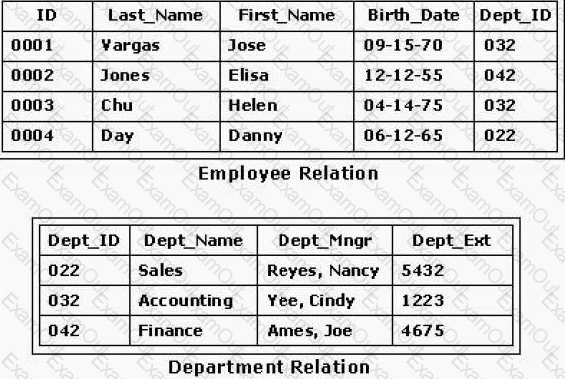
Which of the following best describes the ON DELETE CASCADE referential integrity constraint?
Which pair of relational algebraic operations requires union compatibility?
Consider the following table as well as the Dept1_Parts and Dept2_Parts relations shown in the exhibit: Which of the following relational algebraic expressions would result in the given table?

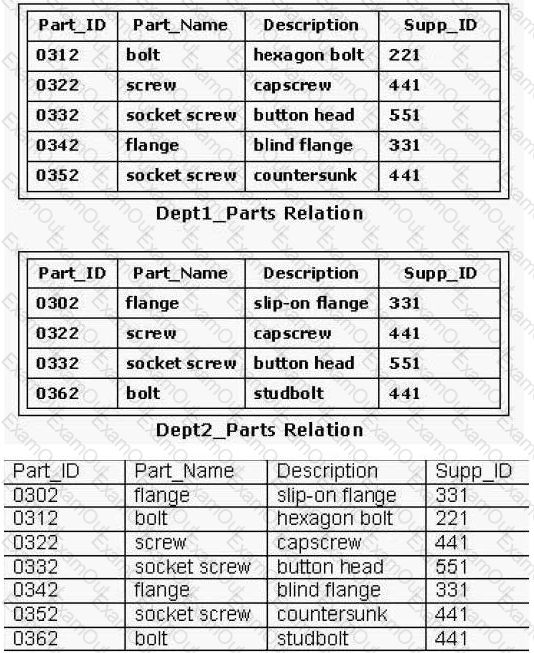
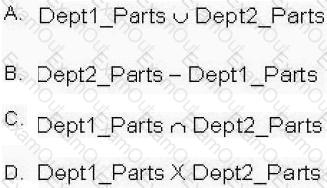
Consider the following SQL statement and the Orders relation shown in the exhibit:
What is the output of this SQL statement?
SELECT *
FROM Orders
WHERE NOT (Amount < 1000
AND Sales_Rep_No = 210);
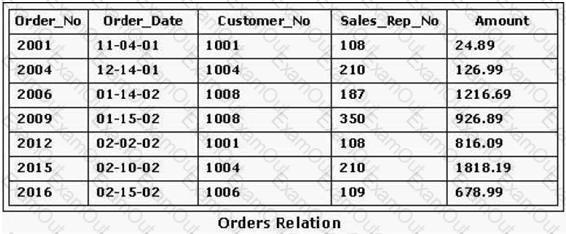
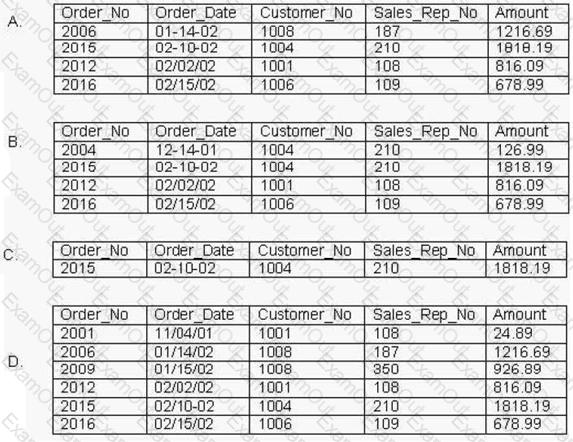
Consider the Dept1_Parts and Dept2_Parts relations shown in the exhibit. Which of the following SQL statements would create a set difference of the two relations with the widest variety of Structured Query Language dialects?
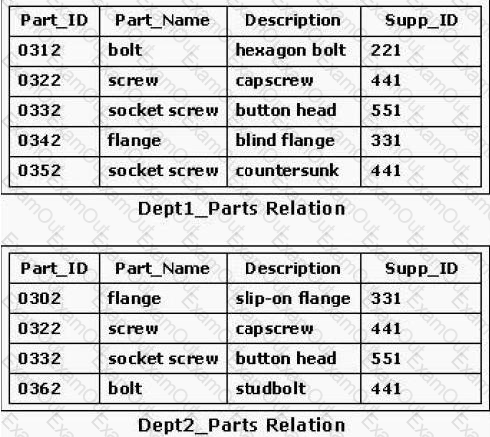
Consider the following relation definitions:
STUDENT(
Student_Number: integer NOT NULL
Name: variable length character string length 20)
Primary Key Student_Number
HOUSING(
Housing_ID: integer NOT NULL
Student_Number: integer NOT NULL
Building: variable length character string length 25)
Primary Key Housing_ID
Foreign Key Student_Number References STUDENT(Student_Number)
ON DELETE NO ACTION
ON UPDATE CASCADE
What are the referential constraints for the relations defined in these relation definitions?

